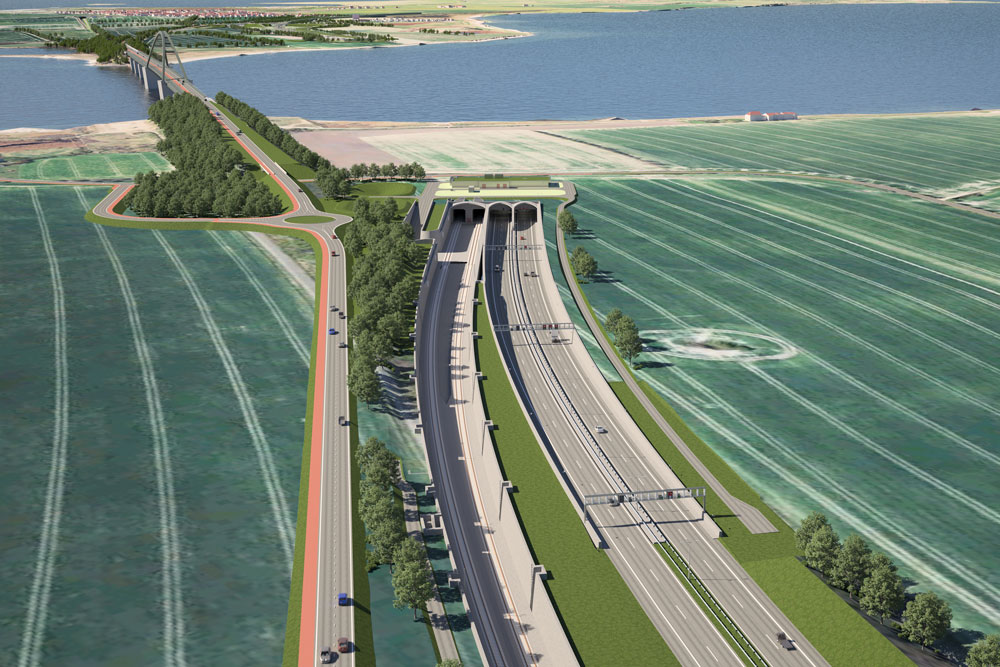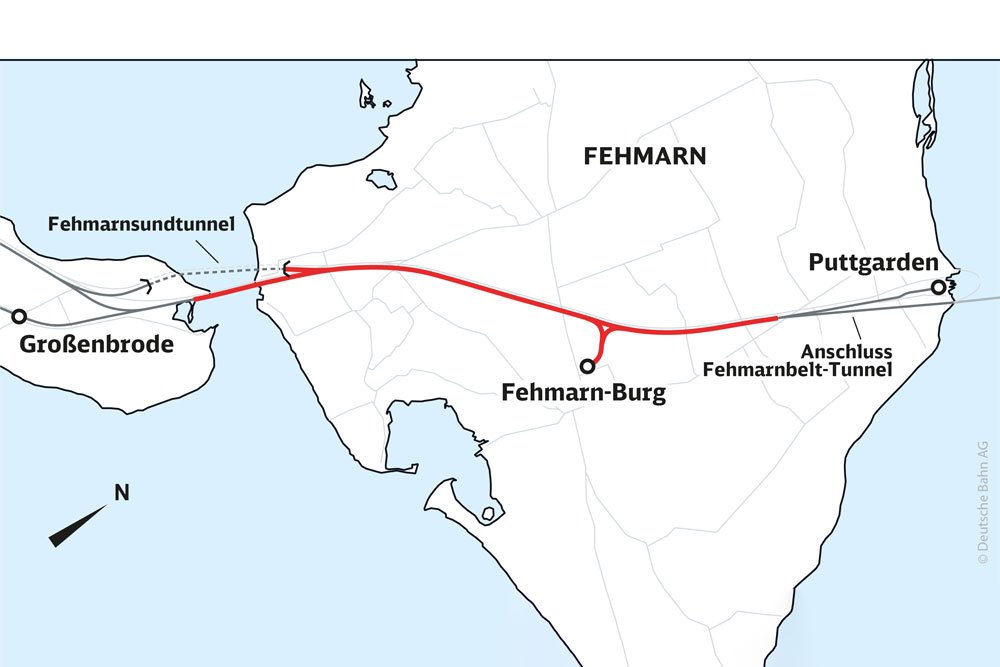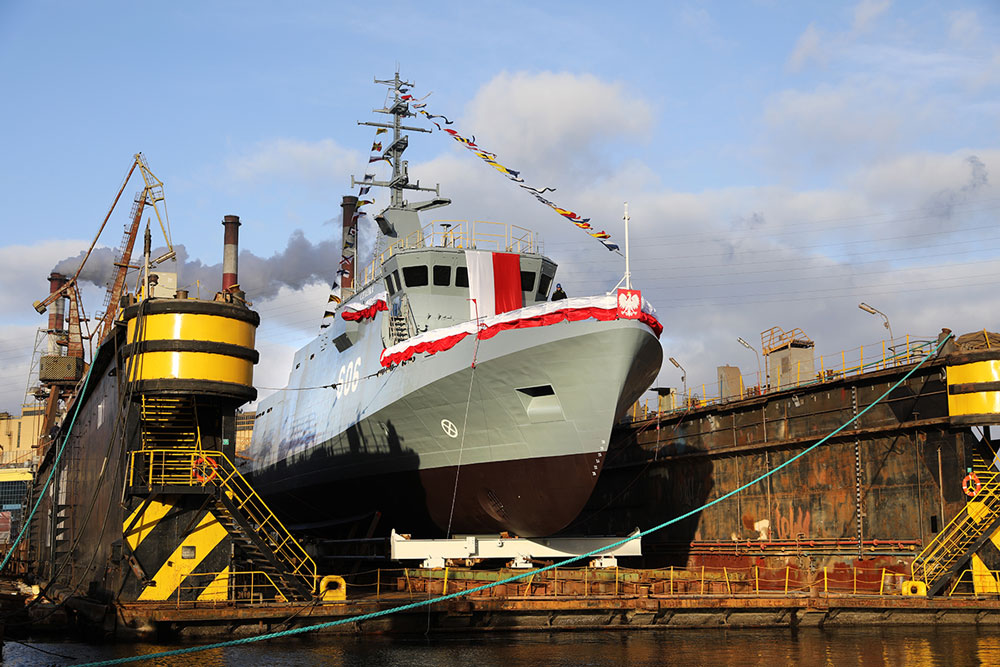Instead of just under five hours, it will soon take two and a half hours by train from Hamburg to Copenhagen via the new Fehmarnbelt Tunnel. Deutsche Bahn (DB) began construction of the rail link today.
The first trains are scheduled to run through the Fehmarnbelt Tunnel via Copenhagen, Lübeck and Hamburg from the end of 2029. The rail link being built is the crucial link between the Belt Tunnel, which connects Lolland in Denmark with the island of Fehmarn, and the mainland in Schleswig-Holstein.
In addition to its importance for travelers, the new route is also fundamental for freight transport between Northern Europe and Italy and the necessary modal shift to rail, according to Deutsche Bahn. The official go-ahead was given today by DB Infrastructure Board Member Berthold Huber, Schleswig-Holstein’s Minister President Daniel Günther and State Secretary Susanne Henckel.

3.5 billion has been earmarked for the Fehmarnbelt link
The federal government, the state of Schleswig-Holstein, DB and the European Union are jointly investing around €3.5 billion in one of the most important European transport projects. A total of 88 km of new rail track is being built on the German side between Puttgarden and Lübeck. The Belt Tunnel is being built by the Danish company Femern A/S. Joint commissioning is planned for the end of 2029.
Deutsche Bahn is initially starting with the double-track expansion and electrification of the 11.4 km stretch between Puttgarden and the Fehmarnsund Bridge – the first of a total of ten construction phases. From 2026, all sections between Fehmarn and Lübeck will be built in parallel. Of the 88 km total route, 55 km are planned as new construction.
When it opens at the end of 2029, local and long-distance travelers should benefit from more frequent and faster connections. For commuters in the Ostholstein region, completion of the new line will reduce the journey time from Fehmarn to Lübeck from just under one and a half hours to just 49 minutes.
Trains between Lensahn and Lübeck will then only take 23 minutes instead of the previous 53 minutes. According to DB, these are all important building blocks for the connection to the Deutschlandtakt and crucial for the economic development of the region. In Ostholstein alone, several new commercial areas will be created along the line as a result of the significantly improved transport connections.
The railroad is also building six new, barrier-free stations, including between Großenbrode and Heiligenhafen and in Ratekau.
68 freight trains to run via Fehmarn in future
The Belt connection is also considered the centerpiece of the new European freight corridor between Oslo and Palermo. In future, 68 freight trains will run daily via the Belt route. There will also be a further 30 freight trains from the port of Travemünde to Italy. According to Deutsche Bahn, this will also make an important contribution to shifting traffic to climate-friendly rail and thus to achieving the German government’s climate policy goals.
“After years of planning, today we can celebrate the start of construction of the rail link here on Fehmarn. Together with our Danish partners, we are creating a new European rail link from Denmark via Germany to Italy in the middle of the Baltic Sea by 2029. This corridor is just as important for local and long-distance traffic here in Schleswig-Holstein as it is for European freight traffic,” says DB Board Member for Infrastructure, Berthold Huber.















